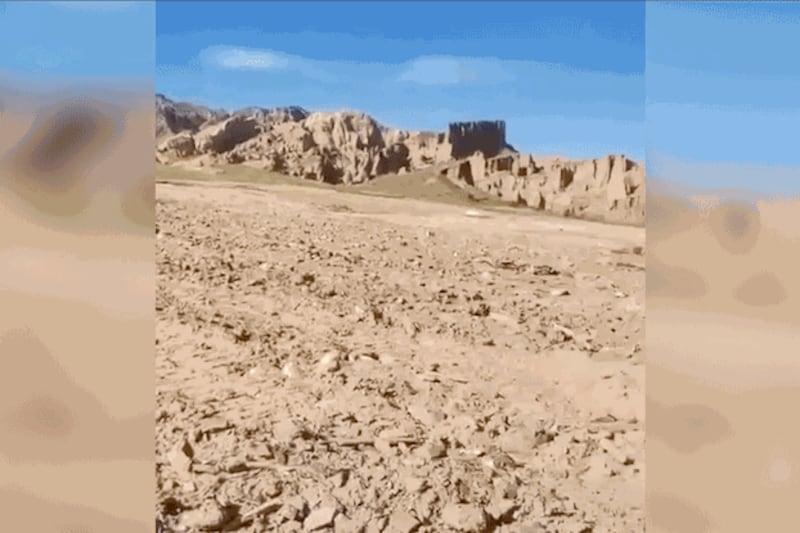Authorities have demolished a 19th-century Tibetan Buddhist monastery in the Tibetan area of Qinghai province to make way for a hydropower dam project, three sources with knowledge of the situation said.
A video shared exclusively with Radio Free Asia by a source who recorded it in early July shows that nothing remains of the religious structure, with the monastery’s main prayer halls and the many stupas that surround it completely razed to the ground. RFA was able to independently verify the authenticity of the video with two sources from Tibet and in exile.
Authorities began relocating the Atsok Gon Dechen Choekhorling Monastery in Dragkar county, or Xinghai in Chinese, in April because they expect it to be submerged under water after the completion of the world's tallest 3D-printed hydropower dam, two sources from the region told Radio Free Asia in a previous report.
The expansion of the Yangqu hydropower station on the Yellow River — known as the Machu River among Tibetans — was started in the province in 2022 and will be completed later this year.
The dam’s construction, Tibetans say, is yet another example of Beijing’s disregard for their culture, religion and environment, especially when it comes to Chinese government infrastructure projects.
The monastery’s 160 monks now live in makeshift tin huts, though authorities said earlier that they would be relocated to alternative housing in Khokar Naglo near Palkha township, said the sources, all of whom spoke on condition of anonymity for fear of retribution.
But no such accommodation arrangements have been made, the sources said.
Though the monastery’s three shrines are being housed in a nearby village, the government said it would take two to three years to rebuild the monastery, said one of the three sources.
“However, only a few tens of thousands of Chinese yuan have been allocated for the reconstruction, with no additional funds planned,” the same source said.
Authorities prohibited Tibetans from taking photos or recording videos of the destruction, which left no trace of the monastery’s main hall made of rare and valuable slate, he added.
RELATED STORIES
[ Historic Tibetan Buddhist monastery is being moved to make way for damOpens in new window ]
[ Tibetans forced to move to make way for Chinese power plantOpens in new window ]
[ China arrests more than 1,000 Tibetans protesting dam projectOpens in new window ]
Tibetans believe that the monastery is sacred and has been made holier over 135 years of prayers and practice by generations.
The monks previously petitioned authorities to rescind relocation orders issued by China's National Development and Reform Commission, or NDRC, a Tibetan source told RFA in the earlier story.
But in April 2023 the government’s Department of National Heritage declared that the artifacts and murals inside the monastery were of “no significant value or importance” and that the relocation would proceed, he said.

Lu Gang, secretary of the State Party Committee of Qinghai province’s Tsolho Tibetan Autonomous Prefecture, called Hainan in Chinese, visited the Yangqu hydropower station site for an inspection on July 25, Chinese state media reported.
Lu said the station was a major project for the prefecture to build a “national clean energy industry highland” and told local authorities to ensure its gate closed completely when built to store water as scheduled for power generation.
With that work in the early stages, the construction of the relocated Atsok Monastery downstream and subsequent industrial development was “still heavy and complicated,” Lu said.
“The focus of the work of Atsok [Monastery] should be shifted from ‘demolition and relocation’ to ‘construction and management,’ and a strong grassroots battle fortress should be built,” he said.
“We should take the initiative to move forward and coordinate to solve difficult problems, ensure that production and life are in order, and that Buddhist activities are carried out normally.”
Additional reporting by Lobsang for RFA Tibetan. Translated by Tenzin Dickyi and edited by Tenzin Pema for RFA Tibetan. Edited by Roseanne Gerin and Matt Reed.


